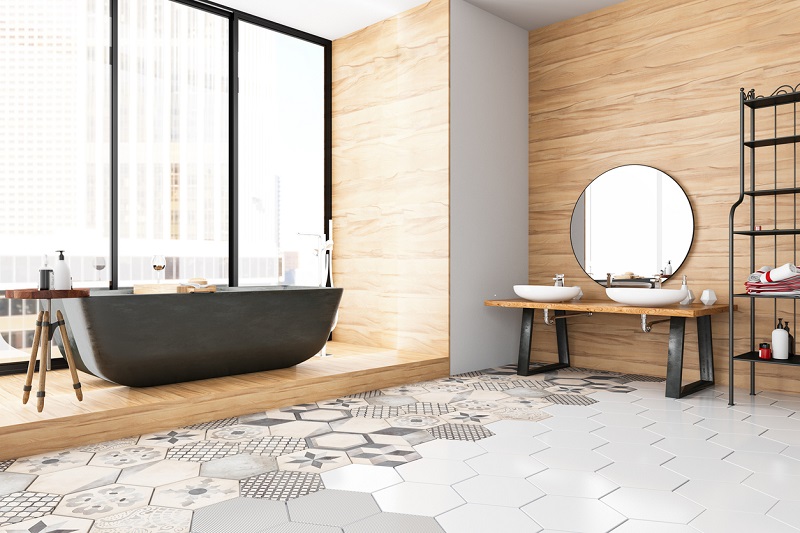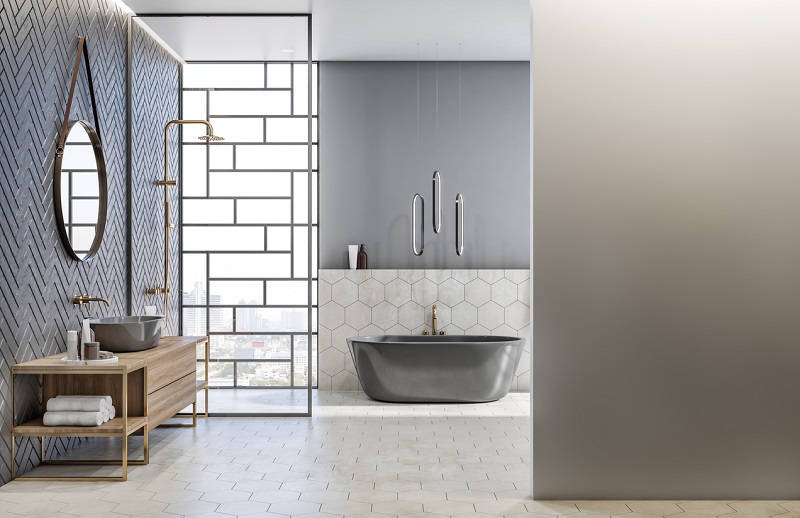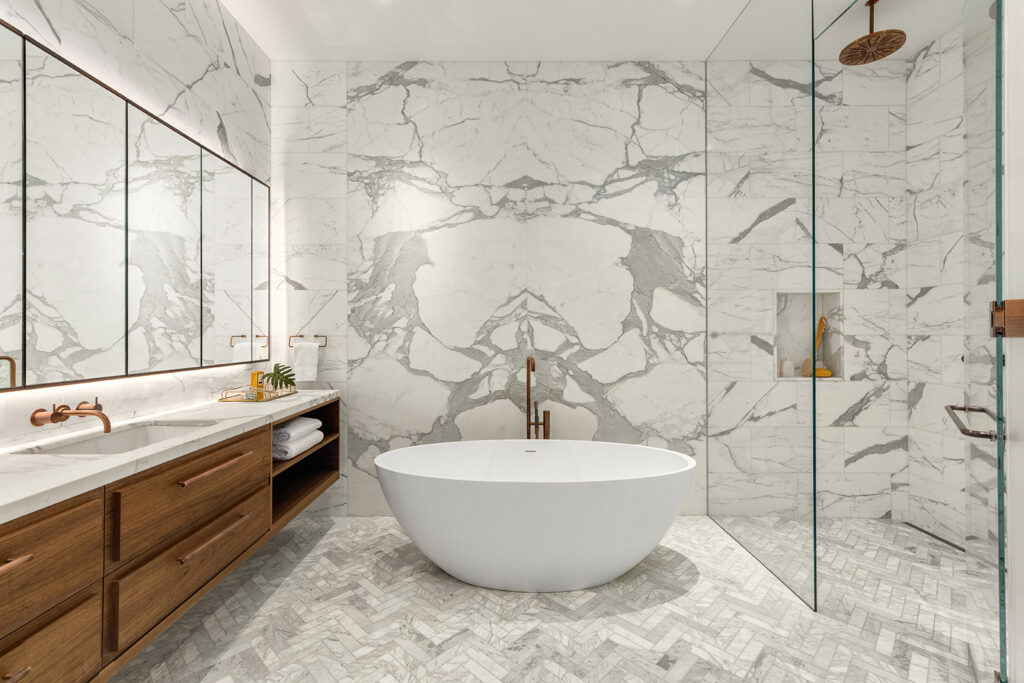
Where Can Young Americans Afford Their First Home? | 2025 Study
Nearly 75% of Americans under 30 cannot afford to buy a home in their current city, making location choice critical
Are you looking for an inexpensive alternative to your central heating system? Radiant heated floors are comfortable and cost-efficient. Installed directly into your floor, they require little maintenance and can reduce your heating bill. So let us look at what radiant heating is and see if it’s the right fit for your home.
Radiant heating systems use either hydronic or electrical currents to supply heating to an area, such as the floor. The heat then transfers from the floor to other objects in the room, slowly warming the entire room.

Heated floors have become more and more popular over the last five years simply because of their ease of use and installation. They require little to no maintenance and can easily be DIY. In addition, the heating is more uniform and energy-efficient than traditional duct-based heating systems.
There are two primary radiant floor heating systems: electronic and hydronic. Here are their main differences:
Electric radiant floor heating uses electricity through wires to heat the floor. The electricity heats the cables, and the cables, in turn, heat the floor. This radiant heating method provides heat quickly, requires no additional maintenance, and is easy to install. However, this heating method is also quite expensive to heat a home and is more suitable to heat flooring than an entire home.
Hydronic systems utilize boiler-heated water and circulate it through tubing below the floor to transfer heat throughout the entire home. Hydronic is much more affordable than electric radiant systems and can heat an entire home or building rather than a small area. However, hydronic systems will require regular maintenance.
A radiant heating system first heats the floor using thermal radiation and electromagnetic waves, which causes the heat to radiate up and be absorbed by other objects in a room. The heating temperature can be as high as 104 degrees, but most users set it around 80-85 degrees. This provides indirect, diffused heat that radiates throughout the room, warming it. Remember that the heat output needs to be higher than the heat loss present in the room otherwise, your room will never be warm.
Multiple materials work well with radiant heating. However, keep in mind that you want a material that will not react with heat or moisture.

Engineered wood uses multiple layers of plywood combined with a hardwood veneer. When compared to solid hardwood, engineered wood flooring is a better choice as the multiple layers prevent it from reacting to temperature spikes. However, wood is a poor thermal conductor, so it may take a while to provide heating to the room.
When considering porcelain vs acrylic, porcelain and ceramic tiles are ideal materials for radiant heating, as these thin, mineral-based materials conduct heat effectively. Also, when compared to wood, tile is inorganic, which means it will not rot or degrade if the hydronic systems leak.
Laminate flooring is another material to consider as it is very thin, allowing heat to penetrate the material. Laminate is also inexpensive compared to other materials on the market, making it ideal for many homes, and it is quite comfortable to walk on. You should take extra care of using laminate flooring with radiant heat as laminate does not respond well to temperatures exceeding 85 degrees. In addition, water can soak into the thin laminate layers and cause permanent damage.
Carpet has excellent insulating properties, making it a poor material for heated floors. Since the carpet is warm enough, the heat will be absorbed into the carpet rather than dispersed throughout the room. Lastly, carpet is terrible when exposed to moisture, making it incompatible with hydronic systems or any room that has a high moisture level such as the bathroom.
When it comes to radiant heating, there are several benefits in addition to a few drawbacks:
Hydronic or water-based radiant heated flooring costs between $6 to $20 per square foot. Electric-based radiant floor heating runs between $10 to $20 per square foot. Both range in cost from $1 to $5 a day to run. Install costs average $250-400 a day. But on average, the cost of your radiant heating system will depend on the heating area and usage. However, radiant heating is still more cost-effective compared to traditional heating alternatives.
If radiant heating or a traditional heating system is not a great fit for your home, here are a few alternatives to radiant heating:
A space heater is a heater that provides a cheap and portable source of heat. They cost anywhere from $30-200 and simply need to be plugged in to provide heat. The heated area is severely limited however and these devices present a serious fire hazard.
An electric baseboard is a large heater that uses convection to provide heat. They cost anywhere from $60-400 and come in a wide variety of wattages. The advantage of an electric baseboard is that it can be moved to any room they are needed and installed. They take a great deal of time to warm an entire room.
A heated mat is a large floor mat that can be laid out across a room to provide heating. They cost anywhere from $100-200, but they are mobile, easy to use, and can be stored when not in use. They provide a good alternative to traditional heating sources as they are comfortable to walk on and can be placed anywhere in your home. The only downside is that the mat will provide uneven heating and its heating power is very limited.
Here are some considerations when choosing the best-heated floors:
Heated floors provide a new level of comfort to any home. They are a great alternative to central heating, but you should research your home carefully before seeing if heated floors are the right fit for you.

Eric is the founder and president of Badeloft USA. He has been the president of Badeloft’s US division for over ten years and oversees all marketing and branding aspects of Badeloftusa.com.
His expertise lies in small business development, sales, and home and bathroom industry trends and information.
Contact us with any business related inquiries.

Free material samples and tub templates

Nearly 75% of Americans under 30 cannot afford to buy a home in their current city, making location choice critical

1 out of 5 Americans says they always feel rushed in their daily lives, yet finding cities that support a

When upgrading your bathroom, one of the most important—and often overlooked—decisions is choosing between a one-piece or two-piece toilet. While

Small details, including what you place on the floor, can make a big difference when setting up or upgrading your
Request your free material sample below. By submitting, you agree to receive occasional product updates and offers from Badeloft. Unsubscribe anytime.
"*" indicates required fields
"*" indicates required fields
"*" indicates required fields